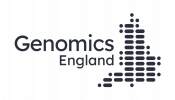© Pint of Science, 2024. All rights reserved.
We will learn how we can fight infectious diseases using ‘phages’ and copper and how we can ensure the right drug is used in the fight against cancer.
Why Our Body Needs Phages
Professor Martha Clokie
(Professor of Microbiology)
In an era of increasing antimicrobial resistance, we desperately need new ways to tackle infectious diseases. Bacteriophage (viruses) are natural bacterial enemies that can be used to treat diseases that are otherwise difficult to treat.
(Image copyright University of Leicester)
(Image copyright University of Leicester)
Metals: A Double Edge Sword
Professor Julie Morrissey
(Professor in Microbial Genetics)
Copper is an essential nutrient for all living organisms, but importantly copper in high concentrations is also highly toxic. Consequently, copper has been used as an antimicrobial for 1000s of years by humans and is still used in hospitals and in agriculture today. Copper is also used within humans and animals to kill invading microbes to prevent infection. Our research investigates the mechanisms used by bacteria to counteract the copper toxicity in the warfare between bacteria and humans, and how this may also influence antibiotic resistance.
Getting the right anti-cancer drug to the right person
Dr Gareth Miles
(Lecturer)
Cancer is a deadly disease which 1 in 2 people in the UK will get in their lifetime, and only about half of people with cancer will survive 10 or more years. Currently available therapies do not work in some patients, because it is difficult to tell which drug would be the most effective in treating each person’s cancer. We use models called “explants” to try and address this. Explants are live pieces of cancer which we treat with anti-cancer drugs and assess if they die in response to each drug or combination of drugs, to predict which drug is likely to be most effective in the clinic.
Map data © OpenStreetMap contributors.

